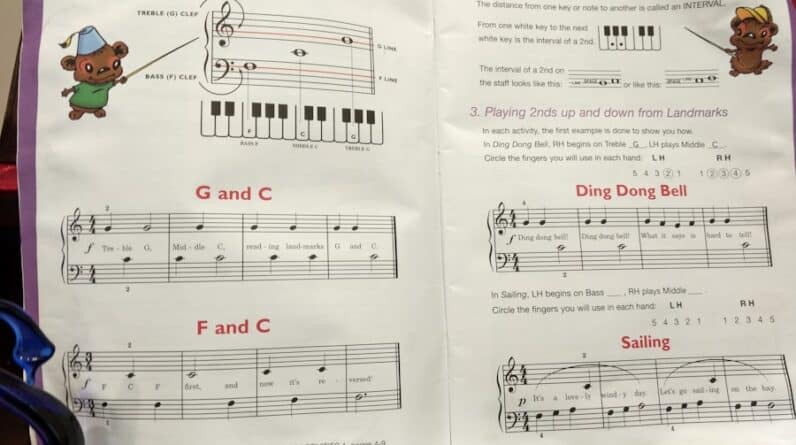
Breathing is the foundation of singing, serving as the very essence that fuels your voice. Without proper breath control, your ability to produce sound effectively is compromised. When you sing, you are not merely vocalizing; you are creating a complex interplay of air pressure, vocal cord vibration, and resonance.
Understanding the importance of breathing in singing can significantly enhance your vocal performance and overall musical expression. It allows you to sustain notes longer, project your voice more powerfully, and convey emotion more effectively. Moreover, breathing is not just about inhaling and exhaling; it’s about how you manage your breath to support your vocal production.
When you learn to control your breath, you gain the ability to manipulate dynamics, pitch, and tone quality. This control can transform a simple melody into a captivating performance. As you delve deeper into the art of singing, you will find that mastering your breath is essential for achieving the vocal agility and stamina required for various styles of music.
Key Takeaways
- Proper breathing is crucial for singing as it helps control airflow and support vocal tone.
- Diaphragmatic breathing involves using the diaphragm to take deep breaths, allowing for better breath control and support.
- Rib cage expansion technique focuses on expanding the rib cage to increase lung capacity and improve breath control.
- The 4-7-8 breathing technique involves inhaling for 4 seconds, holding for 7 seconds, and exhaling for 8 seconds to promote relaxation and control.
- The straw breathing exercise helps singers develop breath control and support by exhaling through a straw.
Diaphragmatic Breathing Technique
Improving Breath Control through Diaphragmatic Breathing
Diaphragmatic breathing is a technique that engages the diaphragm, a muscle located beneath the lungs, to facilitate deeper and more efficient breaths. When you breathe using your diaphragm, your abdomen expands outward rather than your chest rising. This allows for a greater volume of air intake and provides a steady airflow that is crucial for singing.
Practicing Diaphragmatic Breathing
To practice diaphragmatic breathing, start by placing one hand on your chest and the other on your abdomen. As you inhale deeply through your nose, focus on expanding your abdomen while keeping your chest relatively still. This will help you develop a sense of how to engage your diaphragm effectively.
Exhalation Technique
As you exhale, allow your abdomen to contract gently, pushing the air out in a controlled manner. Regular practice of this technique will not only improve your breath support but also enhance your overall vocal quality.
Benefits of Diaphragmatic Breathing
Regular practice of diaphragmatic breathing will not only improve your breath support but also enhance your overall vocal quality.
Rib Cage Expansion Technique

In addition to diaphragmatic breathing, the rib cage expansion technique plays a vital role in maximizing your lung capacity and breath control. This method focuses on expanding the rib cage during inhalation, allowing for a fuller breath that supports sustained singing. By learning to open up your rib cage, you create more space for air, which can lead to a richer and more resonant sound.
To practice this technique, stand or sit up straight and take a deep breath in through your nose. As you inhale, consciously focus on expanding your rib cage outward and upward. You should feel the sides of your torso widening as you fill your lungs with air.
Hold this position for a moment before exhaling slowly through your mouth. This exercise not only helps with breath control but also encourages good posture, which is essential for effective singing.
The 4-7-8 Breathing Technique
The 4-7-8 breathing technique is another valuable method that can enhance your singing by promoting relaxation and focus. Developed by Dr. Andrew Weil, this technique involves inhaling for four counts, holding the breath for seven counts, and exhaling for eight counts.
This rhythmic pattern helps to calm the mind and body while also improving lung capacity and breath control. To practice the 4-7-8 technique, find a comfortable seated position and close your eyes. Inhale deeply through your nose for a count of four, allowing your abdomen to expand fully.
Hold your breath for seven counts, feeling the stillness within. Finally, exhale slowly through your mouth for eight counts, making a gentle whooshing sound as you release the air. Repeat this cycle several times, focusing on the rhythm and flow of your breath.
Incorporating this technique into your daily routine can help reduce performance anxiety and enhance your overall vocal performance.
The Straw Breathing Exercise
The straw breathing exercise is an innovative approach to improving breath control and vocal quality. By using a straw as a tool, you can create resistance while exhaling, which helps to strengthen your diaphragm and improve airflow management. This exercise is particularly beneficial for singers looking to develop a more focused sound and better pitch control.
To perform the straw breathing exercise, take a regular drinking straw and place it in your mouth. Inhale deeply through your nose, filling your lungs with air as you would in diaphragmatic breathing. Then, exhale slowly through the straw, focusing on maintaining a steady airflow.
You can vary the length of time you exhale or even try singing scales while blowing through the straw. This exercise not only enhances breath control but also encourages proper vocal cord closure, resulting in a clearer and more resonant sound.
Breathing Exercises for Vocal Warm-Up

Establishing Breath Support
Begin your warm-up with simple diaphragmatic breathing exercises to engage your core muscles and establish breath support. Follow this with gentle humming or lip trills while focusing on maintaining steady airflow.
Progressing with Scales and Arpeggios
As you progress through your warm-up routine, incorporate scales or arpeggios while paying attention to how your breath supports each note.
Building Confidence
This combination of breathing exercises will not only prepare your voice but also instill confidence as you approach more challenging pieces.
Breathing Techniques for High Notes
Singing high notes can be one of the most challenging aspects of vocal performance, but mastering specific breathing techniques can make this task much easier. Proper breath support is crucial when reaching for those higher pitches; without it, you may find yourself straining or losing control over your sound. Learning how to manage your breath effectively will empower you to hit those high notes with confidence.
One effective technique for singing high notes is to focus on maintaining an open throat while engaging your diaphragm fully. As you prepare to sing a high note, take a deep diaphragmatic breath and visualize lifting the sound from your chest into your head voice. This mental imagery can help create a sense of ease as you ascend in pitch.
Additionally, practicing scales that gradually increase in range will help train both your voice and breath support for those challenging high notes.
Incorporating Breathing Techniques into Singing Practice
Integrating breathing techniques into your regular singing practice is essential for developing long-term vocal health and performance skills. As you become more familiar with various breathing exercises, aim to incorporate them into every practice session systematically. This consistent application will help solidify these techniques as second nature when you perform.
Start by dedicating a portion of each practice session to focused breathing exercises before transitioning into vocal work. For instance, begin with diaphragmatic breathing followed by rib cage expansion exercises to establish a solid foundation for sound production. As you progress through songs or vocal exercises, continually remind yourself to engage these techniques actively.
Over time, you will notice significant improvements in both your vocal quality and overall confidence as a singer. In conclusion, mastering breathing techniques is an integral part of becoming a skilled vocalist. By understanding the importance of breath control and incorporating various methods into your practice routine, you will unlock new levels of vocal expression and performance capability.
Whether you’re aiming for powerful high notes or simply seeking to enhance your overall sound quality, these techniques will serve as invaluable tools on your journey as a singer.





